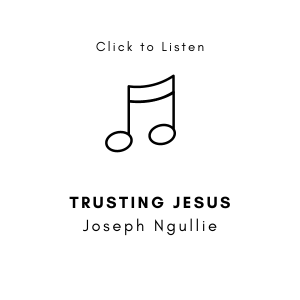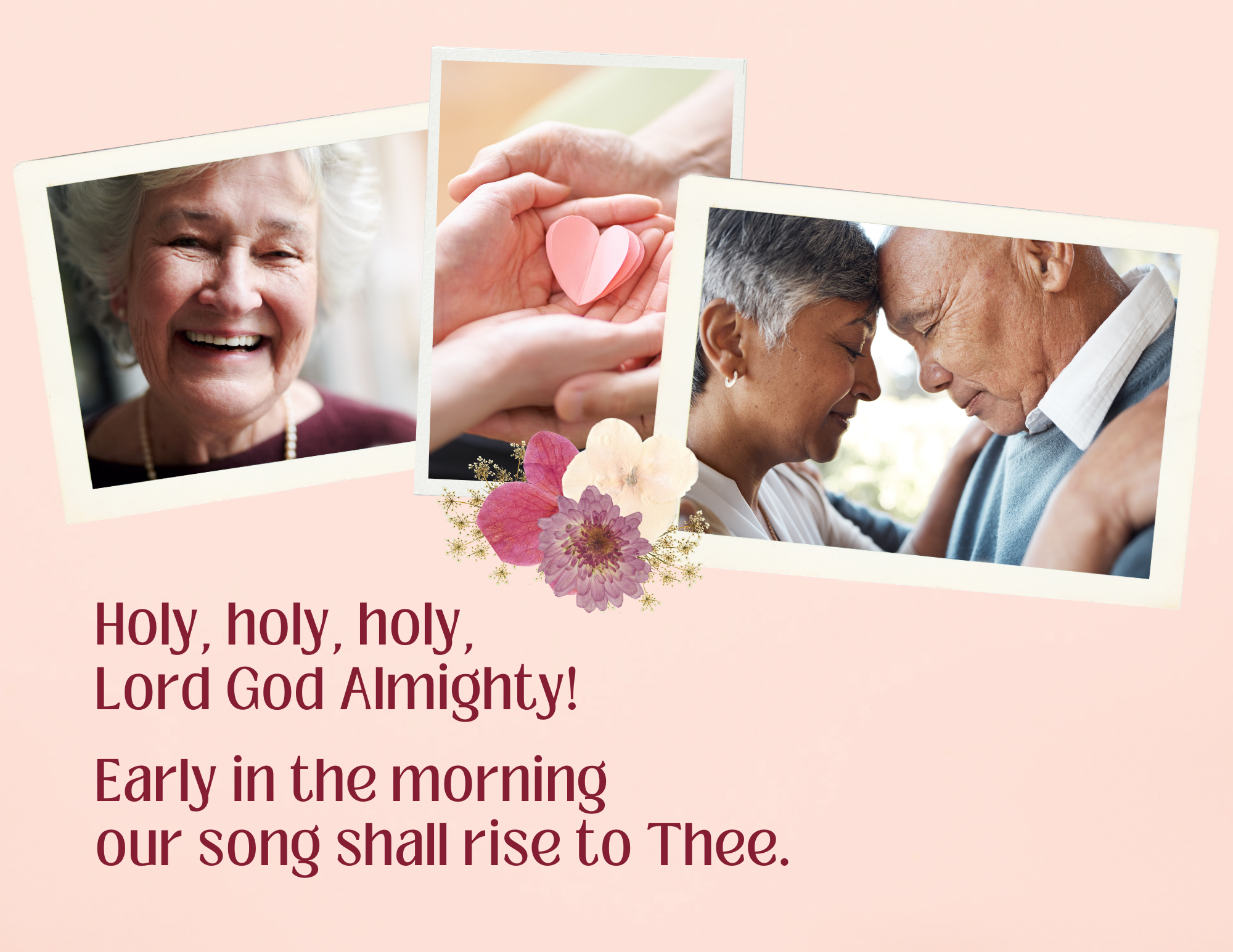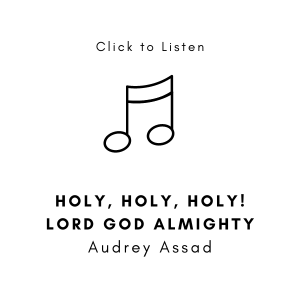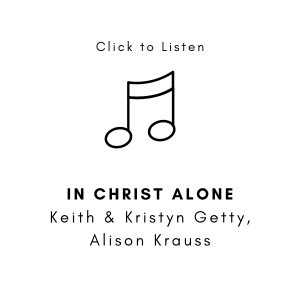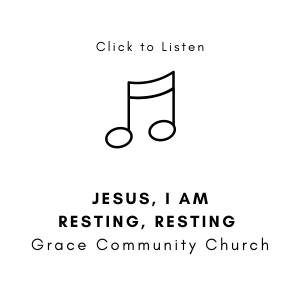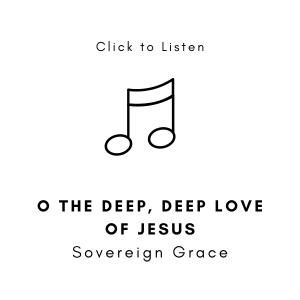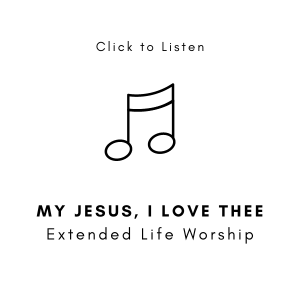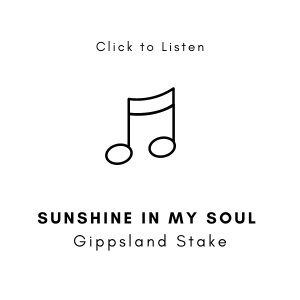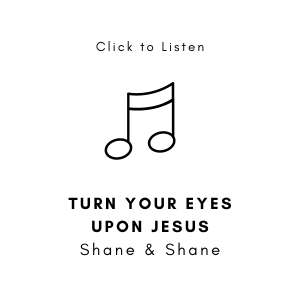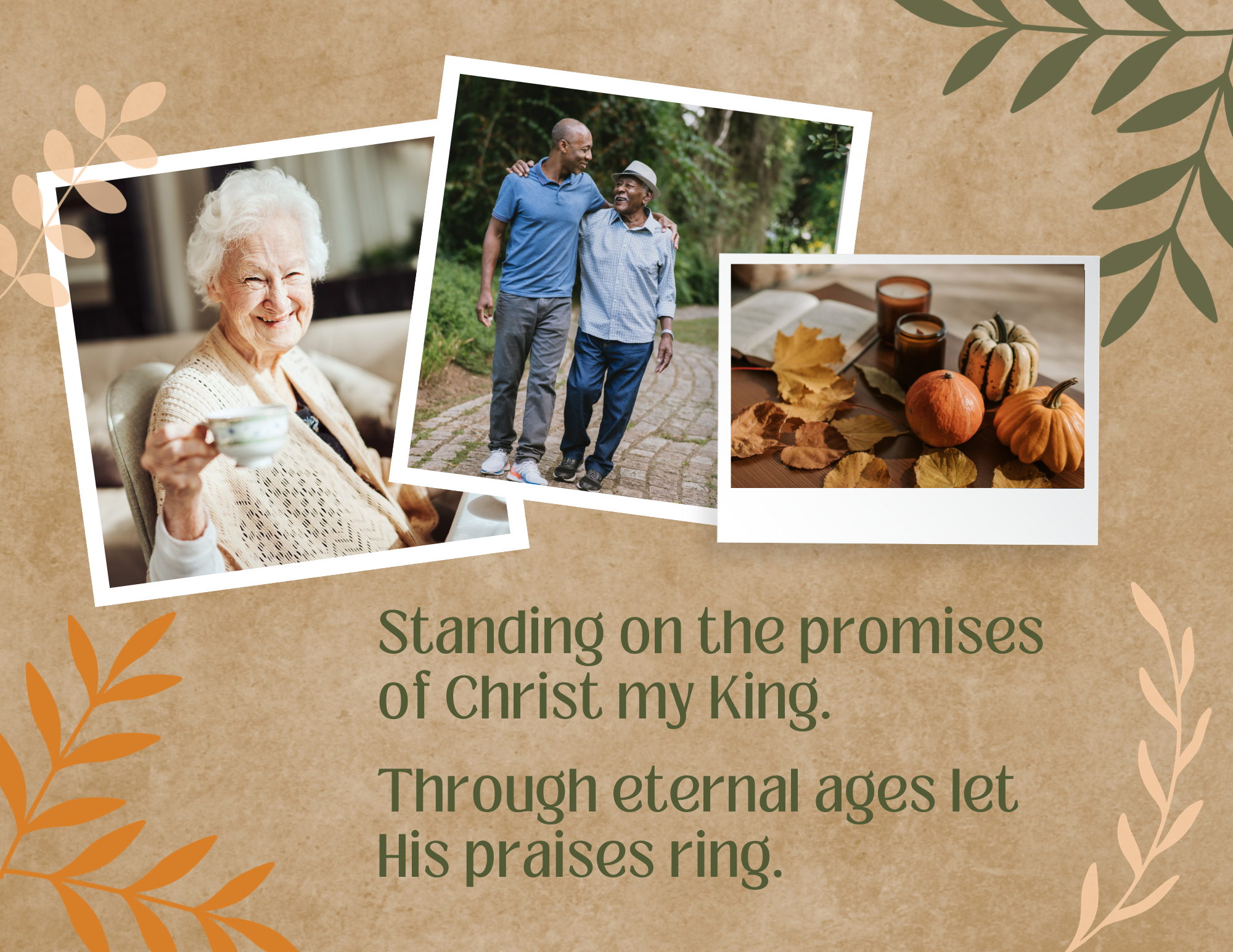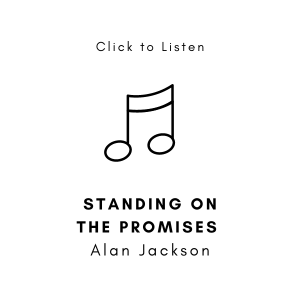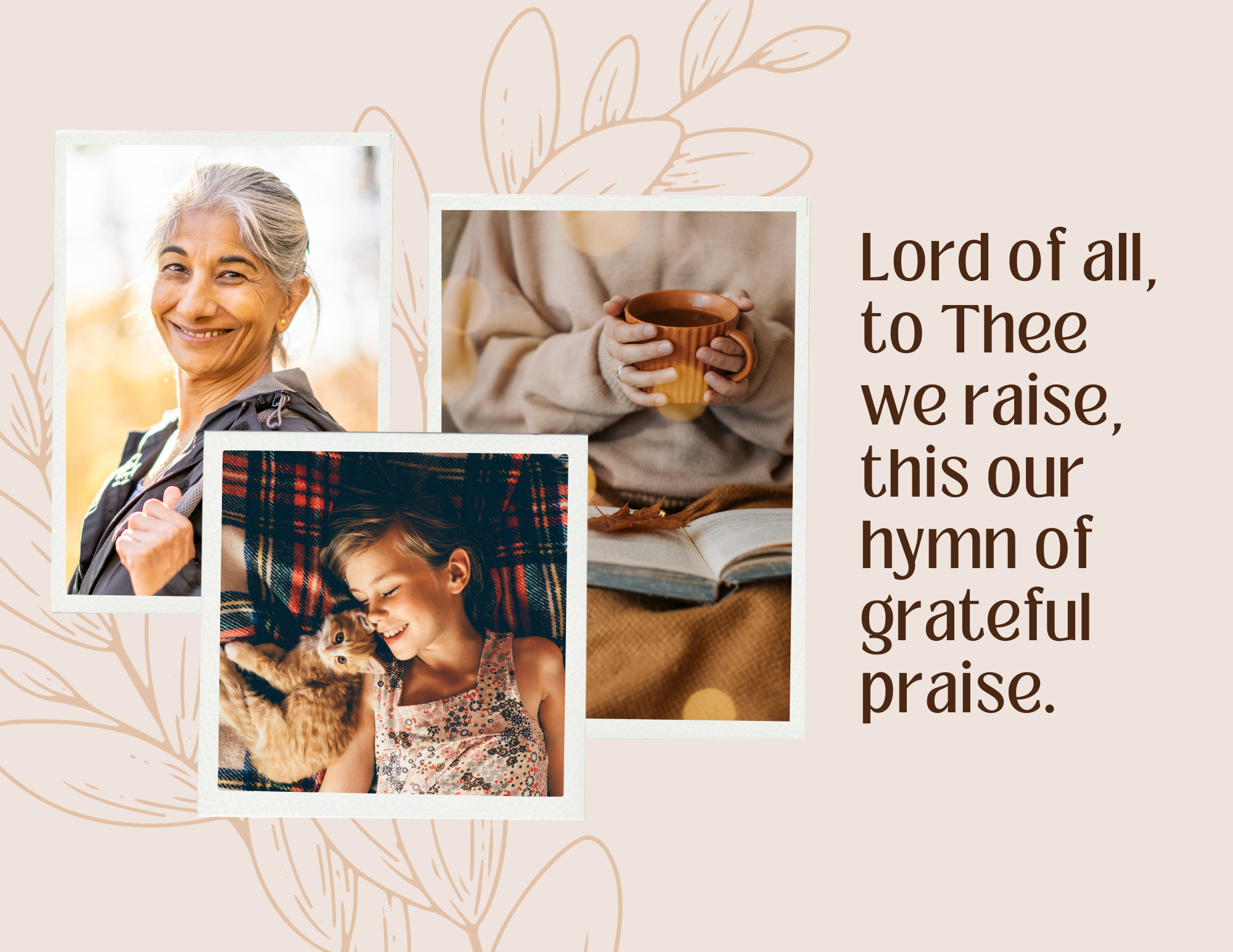Click to go directly to each month
Would you like the Menno Place 2024 Calendar filled with hymn stories?
Featuring some of the most beloved hymns, the Menno Place 2024 Calendar is our gift to you. Visit this page each month to read the stories behind these special hymns!
Pick up your calendar at Menno Place OR click the button below to have a calendar mailed to you.
January
Trusting Jesus
Author: Edgar Page Stites
Composer: Ira D. Sankey
As believers, it is important that we allow a simple gospel hymn with such a profound truth as this to minister to us daily:
Simply trusting every day, trusting through a stormy way;
Even when my faith is small, trusting Jesus – that is all.
Singing if my way is clear, praying if the path be drear;
If in danger, for Him call, trusting Jesus – that is all.
Ira D. Sankey, the composer, relates the following incident regarding the birth of this hymn:
“The words of this hymn were handed to Mr. Moody in Chicago in 1876 in the form of a newspaper clipping. He gave them to me, and asked me to write a tune for them. I assented, on condition that he should vouch for the doctrine taught in the verses, and he said he would.”
The hymn was first published in Sankey’s Gospel Hymns No. 2 in 1876. It was widely used in the great Moody and Sankey evangelistic meetings in the ensuing year. This textually and musically simple expression of child-like trust in Jesus has met the daily spiritual needs of many of God’s people to the present time.
The author, Edgar Page Stites, was for many years an obscure but active lay-worker in the Methodist Church of Cape May, New Jersey. Mr. Stites served in the Civil War and later for a time was a riverboat pilot. He also worked for a period as a Methodist home missionary in the Dakotas.
Excerpted from 101 More Hymn Stories: The Inspiring True Stories Behind 101 Favorite Hymns by Kenneth W. Osbeck. pgs. 293-296.
February
Holy, Holy, Holy! Lord God Almighty
Author: Reginald Heber
Composer: John B. Dykes
Reginald Heber was born in 1783 to a minister and his wife in an English village. After a happy childhood and a good education in the village school, he enrolled at Oxford where he excelled in poetry and became fast friends with Sir Walter Scott. Following graduation, he succeeded his father as vicar in his family’s parish, and for sixteen years he faithfully severed his flock.
His bent toward poetry naturally gave him a keen and growing interest in hymnody. He sought to lift the literary quality of hymns, and he also dreamed of publishing a collection of high-caliber hymns corresponding to the church year for use by liturgical churches. But the Bishop of London wouldn’t go along with it, and Heber’s plans were disappointed. He continued writing hymns for his own church, however, and it was during the sixteen years in the obscure parish of Hodnet that Heber wrote all 57 of his hymns.
In 1822, at age 40, Heber was appointed to oversee the Church of England’s ministries in India. Arriving in Calcutta, he set out on a 16-month tour of his diocese, visiting mission stations across India. In 1826, while on another tour of India, Heber suffered a stoke and passed away.
It was after his death that his widow, finding 57 hymns in a trunk, succeeded in publishing his Hymns Written and Adapted to the Weekly Service of the Church Year. In this volume was the great Trinitarian hymn based on Revelation 4:8-11: And they do not rest day or night, saying: “Holy, holy, holy, Lord God Almighty, Who was and is and is to come!”
Excerpted from Then Sings My Soul: 150 of the World’s Greatest Hymn Stories by Robert J. Morgan. pgs. 98-99.
March
In Christ Alone
Authors: Keith Getty and Stuart Townend
Arranged by: Eric Wyse
Keith and Kristyn Getty are an Irish couple who have richly expanded our hymnbooks. In 2001, they teamed up with Stuart Townend to give us “In Christ Alone.”
“Of all the hymns we have written,” Keith wrote, “this hymn is the most popular wherever we go. Ironically it is the first hymn we ever penned together.
“I had a strong very Irish melody that I could imagine a large crowd singing. I wanted it to become a hymn that would declare the whole life of Christ and what it meant…
“Stuart penned an incredible lyric, which the two of us edited, developed and rewrote for a couple of weeks until it became ‘In Christ Alone.’
“As well as being a creedal song, it fires people with hope that there is the God who even death cannot hold.”
Keith says there are two reasons he and Kristyn write modern hymns. “First, it’s to help teach the faith… The second reason is to try to create a more timeless musical style every generation can sing.”
Excerpted from Then Sings My Soul: The Story of Our Songs by Robert J. Morgan pgs. 182-185.
April
Jesus, I am Resting, Resting
Author: Jean S. Pigott
Composer: James Mountain
This poem, written by an Irish woman named Jean Sophia Pigott, became the favorite hymn of J. Hudson Taylor, the great missionary to China. Often, taking a break from his crushing load of work, Hudson would sit at his little reed organ and sing this hymn. It perfectly expresses his greatest life-lesson.
Hudson had envisioned a missionary task greater than any since the days of Paul – the evangelization of China. He had established the China Inland Mission in 1865, but it almost proved his undoing. Overwhelmed by worry, work , and responsibility, he was near a breakdown when he received a letter from a fellow missionary, John McCarthy. In it, McCarthy spoke from John 15 about abiding in Christ.
“Abiding, not striving or struggling,” wrote McCarthy, “looking off unto Him; trusting Him for present power…”
As Hudson read this letter at his mission station in Chin-kiang in 1869, his eyes were opened. “As I read,” he recalled, ” I saw it all. I looked to Jesus, and when I saw, oh how the joy flowed!”
Writing to his sister in England, he said: “As to work, mine was never so plentiful, so responsible, or so difficult; but the weight and strain are all gone… When the agony of soul was at its height, a sentence in a letter from dear McCarthy was used to remove the scales from my eyes, and the Spirit of God revealed the truth of our oneness with Jesus as I had never known it before. McCarthy, who had been much exercised by the same sense of failure, but saw the light before I did, wrote: ‘But how to get faith strengthened? Not by striving after faith but by resting on the Faithful One.’ ”
Excerpted from Then Sings My Soul: 150 of the World’s Greatest Hymn Stories by Robert J. Morgan. pgs. 198-199.
May
O the Deep, Deep Love of Jesus
Author: Samuel Trevor Francis
Composer: Thomas J. Williams
Few hymns paint such a vivd picture of God’s love as this one by Samuel Trevor Francis. It helps us visualize the immensity of Christ’s liquid-love, overwhelming and submerging us in the depths of His tender, triumphant heart.
Samuel was born in 1834 in a village north of London, but his parents soon moved to the city of Hull midway up the English coast. His father was an artist. As a child, Samuel enjoyed poetry and even compiled a little hand-written volume of his own poetry. He also developed a passion for music, joining the church choir at age nine. But as a teenager, he struggled spiritually, and when he moved into London to work, he knew things weren’t right in his heart.
One day, as he later wrote, “I was on my way home from work and had to cross Hungerford Bridge to the south of the Thames. During the winter’s night of wind and rain and in the loneliness of that walk, I cried to God to have mercy on me. I stayed for a moment to look at the dark waters flowing under the bridge, and the temptation was whispered to me: ‘Make an end of all this misery.’ I drew back from the evil thought and suddenly a message was borne into my very soul: ‘You do believe in the Lord Jesus Christ?’ I at once answered, ‘I do believe,’ and I put my trust in Him as my Savior.”
Francis went onto become a London merchant, but his real passion was Kingdom work – especially hymn writing and open-air preaching – which occupied his remaining seventy-three years. He traveled widely and preached around the world for the Plymouth Brethren. He died in 1925 at the age of ninety-two.
Excerpted from Then Sings My Soul: 150 of the World’s Greatest Hymn Stories by Robert J. Morgan. pgs. 196-197.
June
My Jesus, I Love Thee
Author: William R. Featherston
Composer: Adoniram J. Gordon
Some of our greatest hymns were written by young adults. Isaac Watts wrote most of his memorable hymns at the age of nineteen. When poet John Milton was fifteen, he wrote the well-known, “Let Us with a Gladsome Mind”. The hymn, “Work for the Night is Coming,” was written by an eighteen-year-old. And this hymn of deep devotion, “My Jesus, I Love Thee,” was written by William Ralph Featherston at age sixteen.
Featherston was born in 1846 in Montreal. He died in the same city 26 years later. His family attended the Wesleyan Methodist Church, and it seems likely that William wrote this hymn as a poem celebrating his conversion to Christ. Reportedly, he sent it to an aunt living in California, and somehow it was published as an anonymous hymn in a British hymnal in 1864.
Little else is known about the origin of the hymn or its author, but that’s all right. It’s enough just to know that God can change the world through anyone – regardless of age – who will say, “My Jesus, I love Thee, I know Thou art mine. For thee, all the follies of sin I resign.”
Excerpted from Then Sings My Soul: 150 of the World’s Greatest Hymn Stories by Robert J. Morgan. pgs. 150-151.
July
Sunshine in My Soul
Author: Eliza E. Hewitt
Composer: John R. Sweney
Eliza Hewitt was born in Philadelphia in 1851. Even though she was a teenager during the Civil War, she managed to concentrate on school well enough to graduate valedictorian of her class. She displayed a love for children, and after further study she became a schoolteacher.
In 1887, Eliza, 35, was struck by an unruly student. He slammed his slate across her, severely injuring he back. The doctor placed her in a heavy cast for six months, and Eliza was virtually immobile, perhaps wondering if she would ever walk again. When the cast was removed the doctor told her to take a short walk in nearby Fairmont Park. It was a warm day, and she was overcome with joy. Returning home, she picked up her pen and immediately wrote this hymn.
Eliza’s injuries were severe enough to preclude school teaching, so she devoted herself to Bible study and hymn-writing. Eliza lived many more years and wrote scores of hymns, including “My Faith Has Found A Resting Place,” “When We All Get To Heaven,” and “Will There Be Any Stars In My Crown?”
Excerpted from Then Sings My Soul: 150 of the World’s Greatest Hymn Stories by Robert J. Morgan. pgs. 222-223.
August
Turn Your Eyes Upon Jesus
Author & Composer: Helen H. Lemmel
Helen Lemmel was born in England in 1863, and came to America with her family when she was a child. Her father, a Wesleyan Methodist preacher, settled in Wisconsin. There Helen spent her teen years, growing in musical interest and ability. Her parents provided the best training possible, including a stint in Germany, studying with the masters.
After returning to America, Helen found herself in demand, traveling widely and giving concerts in auditoriums and churches across the Midwest. She could have been a popular singer in the secular world, but Helen’s greatest desire was to serve Christ with her voice. Accordingly, she joined the Moody Bible Institute and trained young people in music and song.
In 1918, Helen, fifty-four, was visiting a friend who showered her a gospel tract by Lillias Trotter, missionary to North Africa, entitled, “Focused.” There Helen read these words: “So then, turn your eyes upon Him, look full into His face and you will find that the things of earth will acquire a strange new dimness.”
Helen later described how she turned that simple sentence into a famous hymn: “Suddenly, as if commanded to stop and listen, I stood still, and singing in my soul and spirit was the chorus, with not one conscious moment of putting word to word to make rhyme, or note to note to make melody. The verses were written the same week, after the usual manner of composition, but nonetheless dictated by the Holy Spirit.”
The song was published in Britain in 1922, and two years later in the United States.
After her retirement, Helen moved to Seattle where she passed away at the age of ninety-seven, in 1961. She had written over five hundred hymns, as well as many children’s songs. Her long life was spent looking up, seeing Jesus, and reflecting His radiance to others.
Excerpted from Then Sings My Soul Book 2: 150 of the World’s Greatest Hymn Stories by Robert J. Morgan. pgs. 284-285.
September
All Things Bright and Beautiful
Author: Cecil Frances Alexander
Music: 17th Century English Melody
One day, Mrs. Cecil Frances Alexander was working with one of her pupils in Sunday school – a little boy who happened to be her godson. He was struggling to understand the Apostles’ Creed and certain portions of the catechism. Mrs. Alexander began to mull the possibility of converting the Apostles’ Creed into songs for children, using simple little hymns to explain the phrases and truths of the Christian faith to little ones.
The Apostles’ Creed begins: I believe in God, the Father Almighty, Maker of heaven and earth, and in Jesus Christ, His only Son, our Lord. For the phrase, “Maker of heaven and earth…” she wrote this lovely little song, “All Things Bright and Beautiful.” She based the hymn on Genesis 1:31: “Then God saw everything that he had made, and indeed it was very good.”
Mrs. Alexander went on to write “Once in Royal David’s City,” “There Is a Green Hill Far Away,” and “He is Coming! He is Coming!” – all based on phrases from the Apostles’ Creed. These hymns were published in 1848 in Mrs. Alexander’s book, Hymns for Little Children. It became one of the most successful hymn-publishing projects in history, going through over one hundred editions. She published many other books and hymnals, but none have stood the test of time like the powerful combination of the Apostles’ Creed with her own gift for song.
Excerpted from Then Sings My Soul Book 2: 150 of the World’s Greatest Hymn Stories by Robert J. Morgan. pgs. 74-75.
October
Standing on the Promises
Author & Composer: R. Kelso Carter
Russell Kelso Carter, author of this hymn, was an athlete, educator, rancher, preacher, and physician. Here is his condensed testimony:
From my birth in 1849, I was surrounded by Christian influences. My father stood for nearly half a century in the rank of Christian workers in Baltimore; by his side I had the example of a patient, loving mother. I cannot remember when I was not subject to deep convictions of sin; yet as a school-boy, I wandered from the truth until age fifteen, when, under the influence of the cadet prayer-meeting in the Pennsylvania Military Academy, I made a profession of faith in Jesus.
But I made a common mistake; I didn’t forsake my old companions and habits, and for fourteen years I lived the up-and-down experience so familiar to the average church member. I never enjoyed myself so much as when working in Mr. Moody’s meetings in Baltimore; yet even up to that time I was continually slipping and falling. My soul cried for deliverance, and God’s unlimited promises stood out like stars above me. But I wasn’t willing to pay the price.
In the summer of 1879, my heart, which had been chronically diseased for seven years, resisting the remedies of physicians, and refusing to grow better even after three years of sheep-ranching in California, suddenly broke down so seriously as to bring me to the verge of the grave. I had heard of the “prayer of faith” for healing, but I felt persuaded it would border on blasphemy to ask God for a strength which I didn’t propose to use wholly for Him.
Kneeling in my mother’s room in Baltimore, I made a consecration that covered everything. All doubtful things were swept aside. I meant every word, and I have never had any doubts about it since. A quietness came over me and I found the Bible wonderfully open and marvelously satisfying, as it had never been before.
Feeling all the more impressed with God’s healing promises, I concluded to go to Boston and ask prayer and anointing at the hands of Dr. Cullis. I was terribly weak, but I went. I will only add that I returned in three days, walking by by faith, and not by feeling, resumed my college work in September, and at once engaged in all kinds of religious work. I was healed by the power of God alone. Praise the Lord!
Excerpted from Then Sings My Soul: 150 of the World’s Greatest Hymn Stories by Robert J. Morgan. pgs. 214-215.
November
For the Beauty of the Earth
Author: Folliot S. Pierpoint
Composer: Conrad Kocher
Folliot Sandford Pierpoint was born in 1835 in Bath, England. After graduating from Cambridge, he taught at Somersetshire College in his home area of Bath.
One day when he was 29, Folliot found himself walking in the countryside on a beautiful Spring day. He saw the ocean of green, the blue dome of heaven, and the winding Avon River cutting through the flowery landscape. Overwhelmed with God’s creative brilliance, he wrote this poem. He intended it primarily for Communion services in the Anglican Church, but when it jumped the Atlantic, it quickly became associated with the American Thanksgiving holiday.
In Folliot’s original version, each verse ended with: “Christ, Our God, to Thee we raise / This our sacrifice of praise.” That line was eventually changed to, “Lord of all, to Thee we raise / This our hymn of grateful praise.”
Little else is know about Folliot Pierpoint. He resigned from his position at Somersetshire, and apparently moved from place to place, teaching some, writing hymns, and publishing his poetry. He died in 1917.
Excerpted from Then Sings My Soul: 150 of the World’s Greatest Hymn Stories by Robert J. Morgan. pgs. 148-149.
December
O Come, O Come Emmanuel
Author: Latin Hymn, 9th century; translated by John M. Neale
Composer: Thomas Helmore
The origins of this plaintive carol date to medieval times. In the 800s, a series of Latin hymns were sung each day during Christmas Vespers from December 17 to 23. Each of these hymns began with the word “O,” and were called the “Great” or “O” Antiphones (the word antiphon meaning psalm or anthem). These hymns were apparently restructured into verse form in the 1100s, and finally published in Latin in 1710. In the mid-1800s, they were discovered by an English minister named John Mason Neale, who wove together segments of them to produce the first draft of “O Come, O Come, Emmanuel,” which was published in 1851. Neale’s original version said, “Draw nigh, draw nigh, Emmanuel.”
Neale is a man worth knowing. He was born in London in 1818, the son of an evangelical Anglican clergyman. He attended Cambridge University and proved to be a brilliant student and prize-winning poet.
He was appointed as the director of Sackville College, a home for elderly men. (Sackville College, started by Robert Sackville, Earl of Dorset, in the early 1600s as a home for the elderly, is still going strong today in East Grinstead, Sussex). This was the perfect job for Neale, for he was a compassionate man with a great heart for the needy, but he was also a scholar needing time for research and writing. He also spent time translating ancient Greek and Latin hymns into English.
We owe a debt of gratitude to John Mason Neale every time we sing one of his Christmas carols: “Good King Wenceslas,” “O Come, O Come, Emmanuel,” “Good Christian Men, Rejoice,” and his Palm Sunday hymn, “All Glory, Laud, and Honor.”
Excerpted from Then Sings My Soul Book 2: 150 of the World’s Greatest Hymn Stories by Robert J. Morgan. pgs. 80-81.
January 2025
Leaning on the Everlasting Arms
Author: Elisha A. Hoffman
Composer: Anthony J. Showalter
The idea for this song came from Anthony Showalter, principal of the Southern Normal Musical Institute in Dalton, Georgia. Showalter, a Presbyterian elder, was a well-known advocate of gospel music. He published over 130 music books with combined sales of two million copies, and he became known through the South for his singing schools in local churches.
Showalter took a personal interest in his students and enjoyed keeping up with them as the years passed. One evening in 1887, he was leading a singing school in a local church in Hartselle, Alabama. After dismissing the class for the evening, he gathered his materials and returned to his boardinghouse.
Two letters had arrived, both from former pupils. Each of the young men was heartbroken, having just lost his wife. Professor Showalter went to the Bible, looking for a verse to comfort them. He selected Deuteronomy 33:27: “The eternal God is your refuge, And underneath are the everlasting arms…”
He wrote replies to his bereaved friends, then, reaching for another piece of paper, he wrote to his friend, hymnist Elisha Hoffman. “Here is the chorus for a good hymn from Deuteronomy 33:27,” his letter said, “but I can’t come up with any verses.” Hoffman wrote three stanzas and sent them back. Showalter set it all to music, and ever since, these words have cheered us in adversity:
What have I to dread, what have I to fear, / Leaning on the everlasting arms. / I have blessed peace with my Lord so near, / Leaning on the everlasting arms.
Excerpted from Then Sings My Soul: 150 of the World’s Greatest Hymn Stories by Robert J. Morgan. pgs. 218-219.



